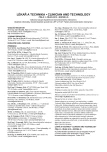COMPARISON OF DOSE CALCULATION ALGORITHMS FOR LEKSELL GAMMA KNIFE PERFEXION USING MONTE CARLO VOXEL PHANTOMS
Dose calculation algorithms implemented in the treatment planning software for Leksell Gamma Knife differ in their results, especially in the areas of steep electron density gradients. The Tissue Maximum Ratio (TMR) algorithm (in two variants) does not employ any patient-specific data besides the idealized skull shape, while the Convolution algorithm takes full advantage of voxel data from computed tomography (CT) to create a more faithful description of the anatomy.
The presented Monte Carlo model of Leksell Gamma Knife Perfexion was created in order to investigate dose distribution characteristics of the machine and to verify the mentioned algorithms. It builds upon Geant4 (a simulation toolkit for particle passage in matter) and being designed in a modular fashion, it enables to put several geometry components together at runtime. A precise description of the Perfexion collimation system is supplemented by voxel phantoms constructed from CT images in the DICOM format.
As a preliminary study, three specific plans of varying complexity were exported from the treatment planning software – a phantom for gel dosimetry and two clinical cases – and simulated using the Monte Carlo model. Scoring volumes were defined so that a direct dose distribution comparison could be made using three-dimensional gamma index analysis. All results show good agreement between the Monte Carlo method and calculated distributions with no significant difference between the algorithms (with over 99.9 % points satisfying the criteria ΔDM = 0,03 and Δdm = 1 mm). We plan to make further studies with more specific, artificially designed treatment plans in order to assess the subtle differences between the algorithms.
Keywords:
gamma knife; Perfexion; voxel phantoms; Geant4; treatment planning
Autoři:
Jan Pipek 1; Josef Novotný Jr. 1,2,3; Josef Novotný 1; Petra Kozubíková 1
Působiště autorů:
Faculty of Nuclear Sciences and Physical Engineering, Czech Technical University in Prague, Prague, Czech Republic
1; Department of Medical Physics, Na Homolce Hospital, Prague, Czech Republic
2; Department of Radiation Oncology, University Hospital Motol, Prague, Czech Republic
3
Vyšlo v časopise:
Lékař a technika - Clinician and Technology No. 3, 2015, 45, 75-81
Kategorie:
Původní práce
Souhrn
Dose calculation algorithms implemented in the treatment planning software for Leksell Gamma Knife differ in their results, especially in the areas of steep electron density gradients. The Tissue Maximum Ratio (TMR) algorithm (in two variants) does not employ any patient-specific data besides the idealized skull shape, while the Convolution algorithm takes full advantage of voxel data from computed tomography (CT) to create a more faithful description of the anatomy.
The presented Monte Carlo model of Leksell Gamma Knife Perfexion was created in order to investigate dose distribution characteristics of the machine and to verify the mentioned algorithms. It builds upon Geant4 (a simulation toolkit for particle passage in matter) and being designed in a modular fashion, it enables to put several geometry components together at runtime. A precise description of the Perfexion collimation system is supplemented by voxel phantoms constructed from CT images in the DICOM format.
As a preliminary study, three specific plans of varying complexity were exported from the treatment planning software – a phantom for gel dosimetry and two clinical cases – and simulated using the Monte Carlo model. Scoring volumes were defined so that a direct dose distribution comparison could be made using three-dimensional gamma index analysis. All results show good agreement between the Monte Carlo method and calculated distributions with no significant difference between the algorithms (with over 99.9 % points satisfying the criteria ΔDM = 0,03 and Δdm = 1 mm). We plan to make further studies with more specific, artificially designed treatment plans in order to assess the subtle differences between the algorithms.
Keywords:
gamma knife; Perfexion; voxel phantoms; Geant4; treatment planning
Zdroje
[1] Elekta Instrument AB A new TMR dose algorithm in Leksell Gammaplan®. Technical Report, 2011.
[2] Elekta Instrument AB The Convolution algorithm in Leksell Gammaplan® 10. Technical Report, 2010.
[3] Agostinelli, S. et al. Geant4–a simulation toolkit Nuclear Instruments and Methods in Physics Research A, 2003, vol. 506, p. 250–303.
[4] Pipek, J., Novotný, J., Novotný Jr., J., Kozubíková, P. A modular Geant4 model of Leksell Gamma Knife Perfexion. Physics in Medicine and Biology, 2014, vol. 59, p. 7609–7623.
[5] Poole, C.M. G4VoxelData, 2013–14,
https://github.com/christopherpoole/G4VoxelData
[6] Kozubíková, P., Šolc, J., Novotný Jr., J., Pilařová, K., Pipek, J., Končeková, J. Assessment of radiochromic gel dosimeter based on Turnbull Blue dye for relative output factor measurements of the Leksell Gamma Knife Perfexion. Journal of Physics: Conference Series, 2015, p. 573.
Štítky
BiomedicínaČlánok vyšiel v časopise
Lékař a technika

2015 Číslo 3
Najčítanejšie v tomto čísle
- RELIABILITA MERANÍ ZAŤAŽENIA NOHY PRI CHÔDZI
- MONITORING VÝSKYTU PORÚCH OSOVÉHO ORGÁNU U ŠTUDENTOV DENTÁLNEJ HYGIENY
- COMPARISON OF DOSE CALCULATION ALGORITHMS FOR LEKSELL GAMMA KNIFE PERFEXION USING MONTE CARLO VOXEL PHANTOMS
- FEASIBILITY OF RADIOIODINE DOSIMETRY USING A SMALL FIELD OF VIEW GAMMACAMERA; PILOT STUDY
